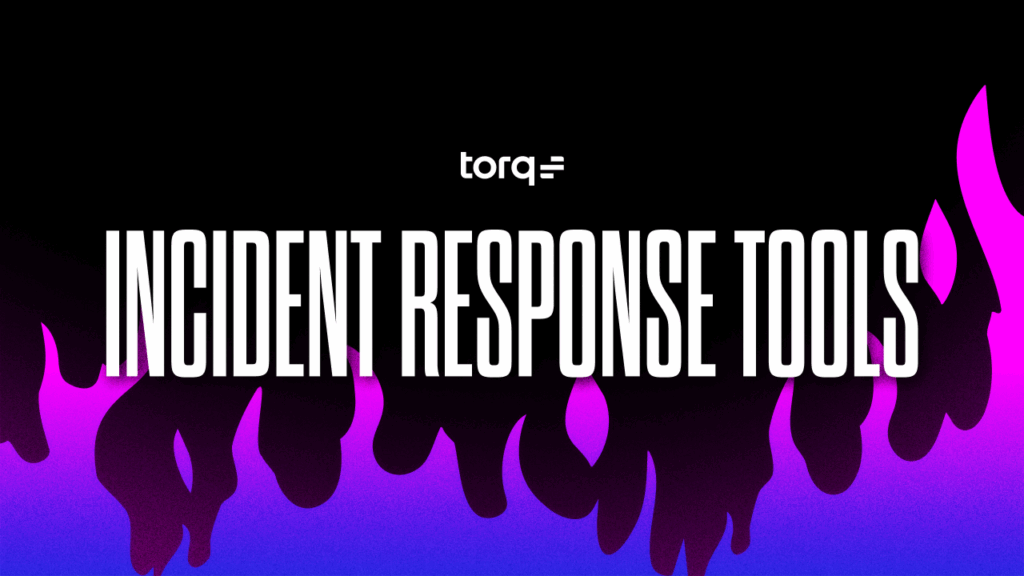Contents
Get a Personalized Demo
See how Torq harnesses AI in your SOC to detect, prioritize, and respond to threats faster.
Running a modern Security Operations Center (SOC) is harder than ever. Between nonstop alerts, talent shortages, and the rising sophistication of attacks, even large enterprises struggle to maintain 24/7 coverage. That’s why Managed Security Service Providers (MSSPs) are becoming the backbone of enterprise cybersecurity.
An MSSP SOC delivers enterprise-grade 24/7 security monitoring, threat detection, and incident response for multiple clients through a single, centralized platform. It gives organizations the power of a fully staffed, modern SOC — without the cost, complexity, or burnout that often come with running one internally.
For businesses, that means enterprise-grade protection without the overhead of building an internal SOC. For MSSPs, it’s a scalable opportunity to deliver differentiated, automation-driven security services that grow with every client onboarded.
This blog shares how MSSP SOCs work, why they’re transforming cybersecurity, and how Torq HyperSOC™ helps both managed security providers and their customers reach new levels of speed, accuracy, and resilience.
The Core Components of an MSSP SOC
An MSSP SOC operates as the nerve center of outsourced cybersecurity. It combines people, processes, and technology into a single operational framework that continuously monitors, detects, and responds to threats in real time.
Key services and functions include:
- 24/7/365 monitoring: Around-the-clock visibility is the defining feature of an MSSP SOC. By leveraging advanced SIEM solutions, EDR, and XDR tools, MSSPs monitor endpoints, networks, and cloud environments for malicious activity every second of the day — something that’s both cost- and resource-prohibitive for most internal teams.
- Incident response and containment: When a threat is detected, the MSSP analysts immediately take action to contain and remediate it. They isolate affected systems, remove malware, reset credentials, and coordinate directly with client IT teams to restore normal operations.
- Threat intelligence and proactive defense: Modern MSSPs hunt for threats. By correlating global threat intelligence feeds with real-time telemetry, they identify active attack campaigns, compromised credentials, and new vulnerabilities before they’re exploited.
- Vulnerability management and compliance: An MSSP SOC also handles vulnerability scanning, patch prioritization, and compliance management, ensuring clients meet frameworks like ISO 27001, SOC 2, GDPR, and HIPAA. This proactive oversight reduces exposure and simplifies audit readiness.
Why Businesses Choose an MSSP SOC
Cost-effectiveness: Running an in-house SOC can cost millions annually once you factor in salaries, training, licensing, and infrastructure. An MSSP SOC distributes these costs across multiple clients, providing enterprise-grade coverage at a fraction of the expense — and with predictable, subscription-based pricing.
Access to specialized expertise: Cybersecurity talent is scarce and expensive. Partnering with an MSSP instantly connects your organization to a team of certified analysts, threat hunters, and incident responders who live and breathe security every day.
Scalability and flexibility: MSSP services include elastic security coverage, scaling services up or down as your business grows or threat volumes spike. Whether your environment operates on-prem or across hybrid and cloud-based environments, MSSPs deliver flexible security solutions that strengthen overall security posture.
More efficient incident response: An MSSP SOC is built to minimize dwell time. Dedicated incident response specialists and automated triage workflows mean that verified threats are contained within minutes, not hours or days.
Advanced technology and tooling: MSSPs provide access to advanced security stacks — SIEM, EDR, IAM, UEBA, and threat intel platforms — without requiring large upfront investments. Clients benefit from cutting-edge protection while MSSPs handle the integration, updates, and ongoing management.
Why MSSPs Choose Torq HyperSOC™
Traditional SIEM tools and SOAR systems often struggle to keep pace with growing alert volumes and complex cyberattacks. That’s why leading MSSPs are turning to Torq HyperSOC™ to deliver next-generation managed security service capabilities.
“Organisations don’t want to buy cyber services from companies that only scratch the surface; they want to work with certified specialists who live and breathe cybersecurity, providing valued insights and advice that is tailored to their business and risk profile… [For Kyocera Cyber’s AI-driven M-SOC offering], joining forces with Torq is key to this, as their platform helps ensure our proprietary architecture is best-equipped to offer peace of mind to customers.”
– Andrew Smith, Chief Information & Strategy Officer at Kyocera Cyber
Built for multi-tenancy: Serve hundreds of customers through a unified platform with shared automations, tenant isolation, centralized visibility, and precise access control.
Agentic AI and Hyperautomation: Torq replaces static automation with agentic AI and Hyperautomated workflows that continuously adapt based on threat context. Instead of following a fixed playbook, it reasons, prioritizes, and acts autonomously.
No-code/low-code workflows: Security teams can deploy custom AI workflows in minutes. This accelerates MSSP onboarding and reduces time to value.
Dynamic case management: HyperSOC cases evolve automatically as new data flows in, maintaining context across the entire incident lifecycle.
Real-time response: Torq connects with your existing MSSP stack (SIEM, EDR, IAM, and XDR) to execute real-time actions. Whether isolating endpoints or revoking compromised tokens, responses are immediate and measurable.
Native integrations: With 300+ integrations, Torq brings fragmented tools under one roof. MSSPs gain unified visibility, simplified orchestration, and effortless scalability.
Operational efficiency: By automating 80–90% of repetitive SOC workloads, MSSPs using Torq improve detection-to-response times, reduce false positives, and dramatically increase analyst productivity, without increasing headcount.
What Businesses Gain with MSSPs Using Torq
If you’re a business choosing an MSSP, not all providers are equal. An MSSP powered by Torq HyperSOC™ delivers measurable advantages:
- Faster incident resolution: AI-driven triage and response slash dwell time.
- Consistent quality: Standardized workflows ensure reliable, compliant responses.
- Full transparency: Real-time dashboards and audit-ready case logs provide clear visibility.
- Reduced false positives: Smarter correlation ensures analysts focus only on genuine threats.
- Continuous learning: The system improves over time — analyzing new attack patterns and optimizing workflows for stronger proactive defense.
HWG Sababa Delivers 24/7 Value with Torq
European MSSP HWG Sababa used Torq Hyperautomation to transform their managed SOC operations into measurable customer value. When HWG Sababa’s in-house automation framework couldn’t keep pace with their growth, the team adopted Torq. The results were immediate. Years of legacy automations were rebuilt in just weeks, and SOC efficiency surged — with Torq now automatically managing more than half of all monthly alerts, accelerating response by up to 95% for high-priority incidents.
By automating repetitive Tier-1 tasks and streamlining alert investigation and containment, HWG Sababa’s analysts reclaimed valuable time to focus on advanced threat hunting and proactive defense. Torq also enabled the MSSP to extend automated response actions to the customer side — executing critical containment and remediation even when clients lacked 24/7 internal teams. Each automation saves five to fifteen minutes, adding up to hours recovered daily and days of productivity gained each month for customers.
Torq now serves as the backbone of HWG Sababa’s managed SOC operations, powering quantifiable ROI, continuous improvement, and a clear competitive edge. As HWG Sababa’s Head of Innovation, Marco Fattorelli, shares “Torq is the ideal solution for adding value to our managed SOC. By accelerating our automations and responses, Torq Hyperautomation helps us stay ahead of the curve — and the competition.”
MSSP vs. In-House SOC: Finding the Right Fit
| Criteria | In-House SOC | MSSP SOC |
|---|---|---|
| Cost | High upfront and ongoing investment | Subscription-based, predictable pricing |
| Staffing | Requires full internal team | Access to expert analysts instantly |
| Coverage | Limited to business hours or regions | 24/7 global monitoring |
| Scalability | Slow, resource-dependent | Rapid, elastic expansion |
| Technology | Complex tool management | Managed and unified by MSSP |
| Ideal for | Highly regulated or large enterprises | Mid-size to enterprise customers seeking agility |
The New Standard for Managed SOCs
Today’s cyber threats move faster than ever. Your security operations center needs to keep pace. Whether you’re an MSSP SOC scaling to serve more customers or a business looking to outsource security for agility and resilience, Torq HyperSOC™ provides the foundation for AI-driven, rapid response managed security services.
See how leading MSSPs use Torq to transform their security operations and deliver better outcomes across every managed client.
FAQs
An MSSP in SOC (Managed Security Service Provider in a Security Operations Center) delivers managed security services like security monitoring, threat detection, and incident response on behalf of multiple clients. Instead of maintaining an internal SOC, organizations outsource their security operations to an MSSP, which provides 24/7 coverage using advanced tools such as SIEM, EDR, and MDR.
An MSSP SOC acts as a centralized command center that protects businesses from cyber threats, improves security posture, and reduces operational costs while ensuring scalable, enterprise-grade defense.
An MSP (Managed Service Provider) focuses on general IT management, network maintenance, cloud management, and endpoint support. An MSSP (Managed Security Service Provider) specializes in cybersecurity, offering advanced security operations, detection, and incident response. While an MSP keeps systems running, an MSSP protects those systems from cyberattacks. Many MSSPs operate full-scale security operations centers (SOCs), using SIEM and threat intelligence to monitor and defend against evolving cyber threats continuously.
An MSSP SOC provides 24/7 security monitoring, detection, incident response, vulnerability management, and compliance support. It acts as an organization’s outsourced security operations center, delivering continuous protection and improved security posture.
MSSP services use SIEM solutions, EDR, and MDR tools to collect and analyze network and endpoint data continuously. Automated correlation and human expertise work together to detect and contain critical threats before they escalate.
SOC-as-a-Service is a managed security service model where organizations outsource their entire security operations center to an external MSSP. It delivers 24/7 security monitoring, threat detection, incident response, and compliance reporting through a subscription-based model.
With SOC-as-a-Service, companies gain access to elite SOC analysts, SIEM tools, and MDR capabilities without the cost or complexity of managing them in-house. It’s the most efficient way to strengthen your security posture, reduce false positives, and maintain continuous protection against evolving cyber threats.
By combining global threat intelligence with real-time telemetry, managed security service providers identify emerging cyber threats, track malicious activity, and take proactive measures to defend client environments.
Managed security service teams monitor frameworks like SOC 2, GDPR, and HIPAA, providing continuous security information, reporting, and audit readiness for clients.
The top benefits include cost savings, faster detection and response, access to elite talent, advanced security tools, and scalable protection — all without building and maintaining a costly internal SOC.






